Discover 15 hidden attractions, cool sights, and unusual things to do in Sibiu (Romania). Don't miss out on these must-see attractions: Brukenthal National Museum, Holy Trinity Cathedral, and Sibiu Lutheran Cathedral. Also, be sure to include Annunciation Church in your itinerary.
Below, you can find the list of the most amazing places you should visit in Sibiu (Sibiu).
Table of Contents
Brukenthal National Museum
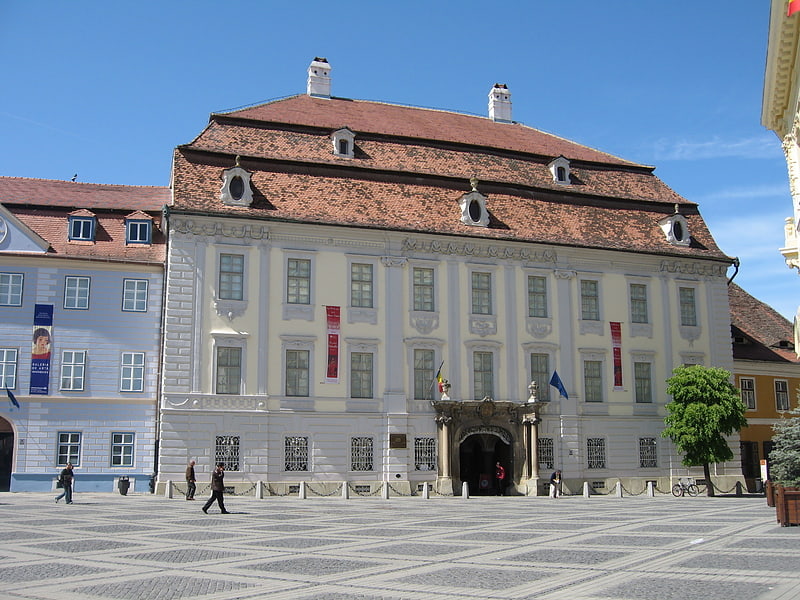
Also known as: Muzeul Național Brukenthal
Art collections in a baroque palace. The Brukenthal National Museum is a museum in Sibiu, Transylvania, Romania, established in the late 18th century by Samuel von Brukenthal in his city palace. Baron Brukenthal, governor of the Grand Principality of Transylvania has established his first collections around 1790. The collections were officially opened to the public in 1817, making the museum the oldest institution of its kind on the territory of modern-day Romania.
Today, in its extended form, it is a complex comprising six museums, which, without being separate administrative entities, are situated in different locations around the city and have their own distinct cultural programmes.[1]
Address: Piata Mare 5, 550163 Sibiu
Holy Trinity Cathedral
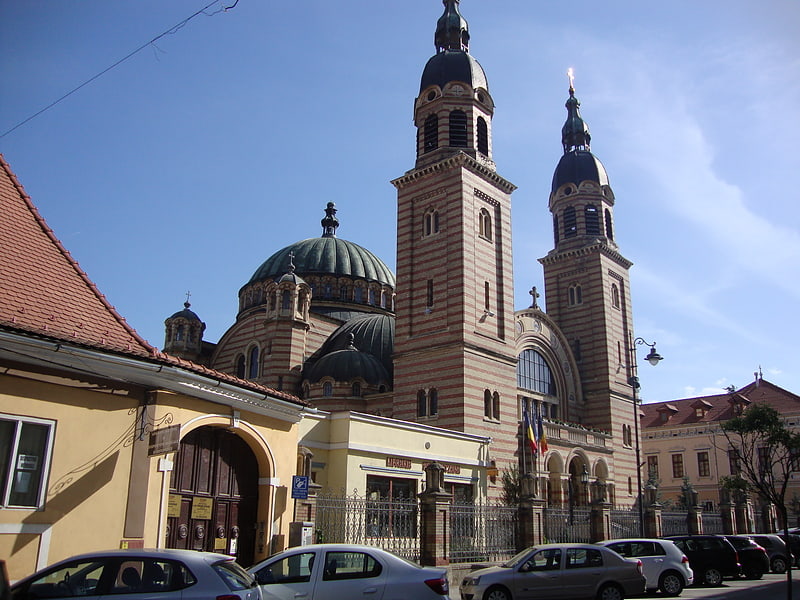
Also known as: Catedrala Mitropolitană din Sibiu
Byzantine church with frescoes and a store. The Holy Trinity Cathedral, Sibiu, located at 35 Mitropoliei Street, Sibiu, Romania, is the seat of the Romanian Orthodox Archbishop of Sibiu and Metropolitan of Transylvania. It was built in the style of a Byzantine basilica, inspired by Hagia Sophia, with the main spires influenced by Transylvanian church architecture and Baroque elements.
The idea of building an Orthodox cathedral in Sibiu began with Metropolitan Andrei Şaguna, who in the autumn of 1857 asked Emperor Franz Joseph I for permission to send a circular to his diocese requesting that priests and laymen give donations. He sent the letter before Christmas that year, and the first donor was the Emperor himself, who gave 1000 gold coins, followed by the governor of Transylvania with 50, Şaguna with 2000 florins, and many others. Donations continued to come in following Şaguna's death in 1873; the cornerstone was laid on 18 August 1902, when Ioan Meţianu was Metropolitan. In order to free the space to build the cathedral (which took up five lots on Mitropoliei Street and three on Xenopol Street, where it also has an entrance), eight nearby houses had to be demolished, as well as the little Greek church built in 1797-1799 that had heretofore served as a cathedral.
Work, coordinated by city architect Iosif Schussnig, began in 1902 and was finished in 1904, when the copper roof was done. The plan, by Virgil Nagy and Iosif Kamner of Budapest, was chosen from among designs submitted by 31 mainly Austrian and Hungarian architects. On 13 December 1904, the four bells were blessed and placed in the two main spires (during World War I, the Austro-Hungarian Army melted the three bells in the western spire for use as cannons; these were not replaced until 1926). The iconostasis and kliros were then manufactured at Constantin Babic's firm in Bucharest; electric lighting was also installed. The iconostasis (of gilt carved wood) and dome (showing Christ Pantocrator flanked by angels) were painted by Octavian Smigelschi, from the nearby village of Ludoș.
The exterior is in red and yellow brick. The spacious nave is bordered by smaller spherical roofs and four towers: two smaller octagonal ones, and two larger ones near the entrance with a square base that becomes octagonal in the bell area. The ends of the towers are shaped like double bulbs, with a skylight in the centre. The main entrance is through a portico with three semicircular doors. Behind this and between the main towers is an ample semicircular vestibule with a similarly shaped stained-glass window, while the outside is decorated with round mosaics showing Jesus and the Four Evangelists. The cathedral is 53.10m long and 25.40m wide in the centre, the dome 24.70m high (34.70m on the exterior) and 15m in diameter, while the spires are 43m high (45m including the crosses).
On 30 April 1906, Metropolitan Meţianu, joined by his suffragan bishop from Arad, Ioan Papp, and a group of priests and deacons, consecrated the cathedral. Nicolae Iorga was also present; he donated a silver engolpion and a valuable icon. Since its dedication, the cathedral has undergone a number of restorations and improvements: the walls have been decorated with neo-Byzantine paintings by Iosif Keber and Anastasie Demian, and liturgical objects, vestments, books and a sound system have all been added. Divine Liturgy and Vespers take place daily, as well as other services when provided for.[2]
Address: Strada Mitropoliei 35, 550179 Sibiu
Sibiu Lutheran Cathedral
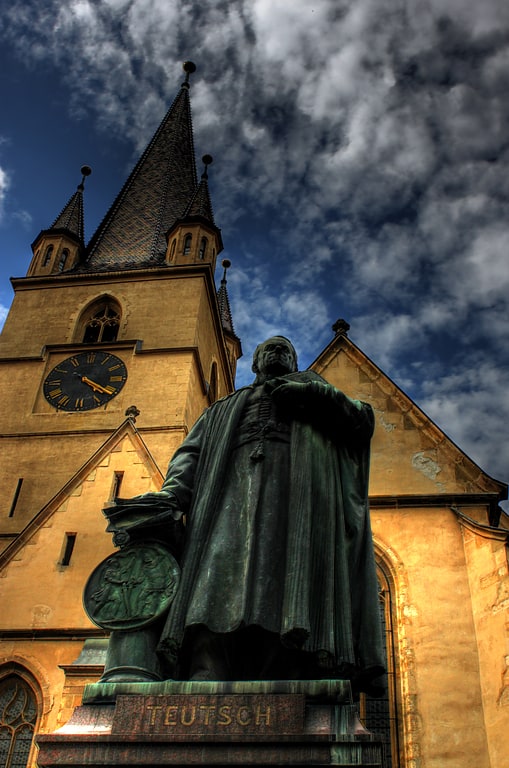
Also known as: Catedrala Evanghelică din Sibiu
Historic church with a lookout tower. The Lutheran Cathedral of Saint Mary is the most famous Gothic-style church in Sibiu, Transylvania, Romania. Its massive 73.34 m high steeple is a landmark of the city. The four turrets situated on top of the steeple were a sign to let foreigners know that the town had the right to sentence to death. It belongs to the Lutheran, German-speaking Evangelical Church of Augustan Confession in Romania.[3]
Address: Piața Albert Huet FN, 550182 Sibiu
Annunciation Church
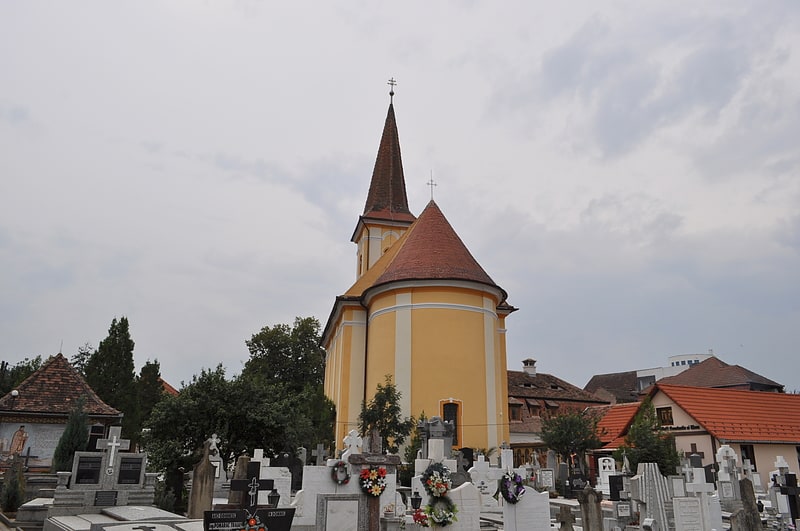
Also known as: Biserica din Groapă din Sibiu
Orthodox church in Sibiu, Romania. The Annunciation Church, also known as the Church in the Ditch, is a Romanian Orthodox church located at 5 Justiției Street in the Transylvanian city of Sibiu.
Initially built between 1788 and 1789 using funds provided by the widow Stana Hagi Petru Luca, it was destroyed by an earthquake in October 1802 and completely rebuilt by her son-in-law Constantin Hagi Popp in 1802-1803. In 1805, the parish had forty families.
The building is a small hall church. The spire, on the western edge, is divided into three stories and reaches a height of 40 m. The iconostasis was painted by Mișu Popp of Brașov. The rich interior mural painting was done after 1960. There are oil paintings of the three ktitors above the entrance door on the interior: Hagi Constantin Popp, Stana Petru Luca and Păuna Constantin Popp. The remains of the three were exhumed in March 1856 and buried under the altar upon the instructions of Bishop Andrei Șaguna.
A number of important 19th-century figures are buried in the cemetery behind the church. The oldest grave, from 1813, holds Meletie, the last parish priest of the local Greek chapel. Notable burials include Ioan Piuariu-Molnar, Vasile Aaron, Vasile Moga, Iosif Hodoșiu, Ion Codru-Drăgușanu, Paul Dunca, Miron Romanul, Zaharia Boiu and Ioan Mețianu. A monument to the nation's heroes was built at the entrance in 2006.
The church is listed as a historic monument by Romania's Ministry of Culture and Religious Affairs. The parish house (built at the end of the 18th century) and the cemetery are given as separate entries, as are four graves: those of Boiu, Codru-Drăgușanu, Moise Fulea and George Manasis.[4]
Jesuit Church
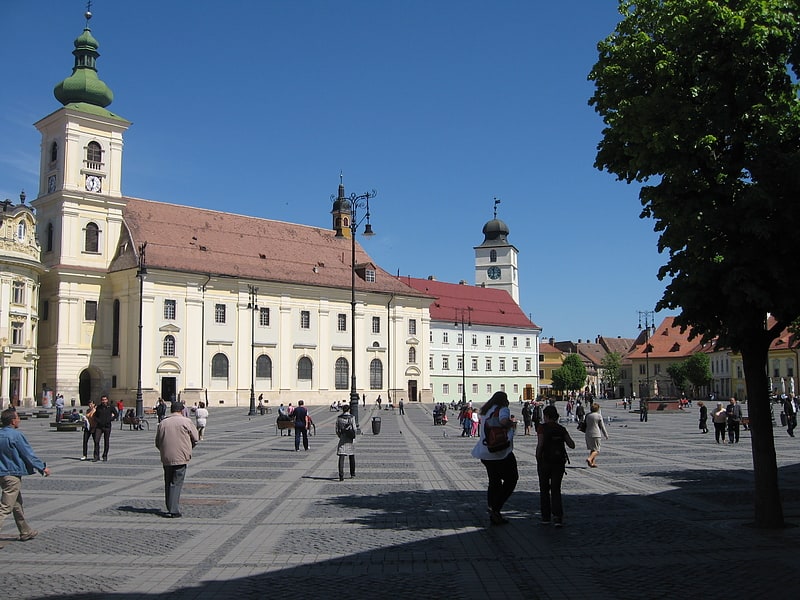
Also known as: Biserica Iezuiților din Sibiu
Jesuit Church, otherwise the Church of the Holy Trinity, is a Roman Catholic church located at 3 Piața Mare, Sibiu, Romania. Immediately adjacent to Brukenthal Palace, it is one of the most notable baroque churches in Transylvania.
The church is listed as a historic monument by Romania's Ministry of Culture and Religious Affairs.
Carmen Iohannis, the wife of president Klaus Iohannis, sings in the choir of this church.[5]
Address: Piata Mare 3, 550163 Sibiu
ASTRA National Museum Complex
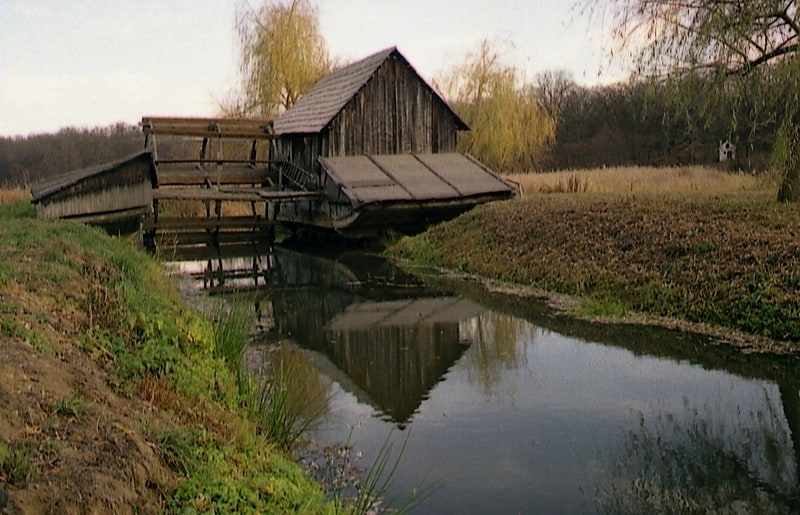
Also known as: Complexul Național Muzeal „Astra”
Museum in Sibiu, Romania. "ASTRA" National Museum Complex is a museum complex in Sibiu, Romania, which gathers under the same authority four ethnology and civilisation museums in the city, a series of laboratories for conservation and research, and a documentation centre. It is the successor of the ASTRA Museum that has existed in the city since 1905. Its modern life started with the opening of The Museum of Folk Technology in 1964, now The "ASTRA" Museum of the Traditional Folk Civilization.[6]
Address: 11 Piața Mică, Sibiu
Church between the Fir trees
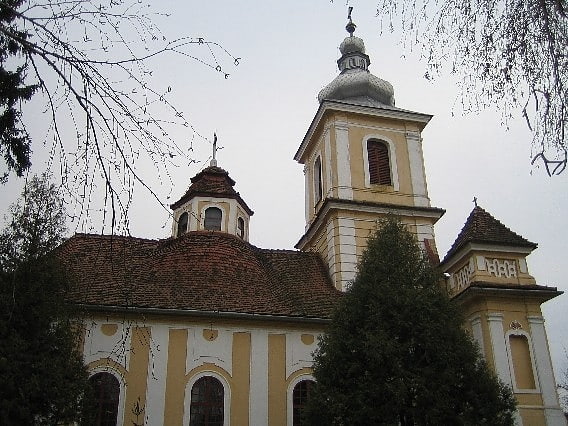
Orthodox church in Sibiu, Romania. The Church between the Fir trees, otherwise the Church of Saints Peter and Paul, is a Romanian Orthodox church located at 17 Reconstrucției Street, Sibiu, Romania.
The church is listed as a historic monument by Romania's Ministry of Culture and Religious Affairs. The church was Greek-Catholic prior to 1948, when the nascent communist regime outlawed the church and confiscated its properties.
Important 19th-century and 20th-century figures are buried in the church cemetery, including George Bariț, Alexandru Papiu Ilarian, Ioan Rațiu and Alexandru Vaida-Voevod.[7]
Lutsch House
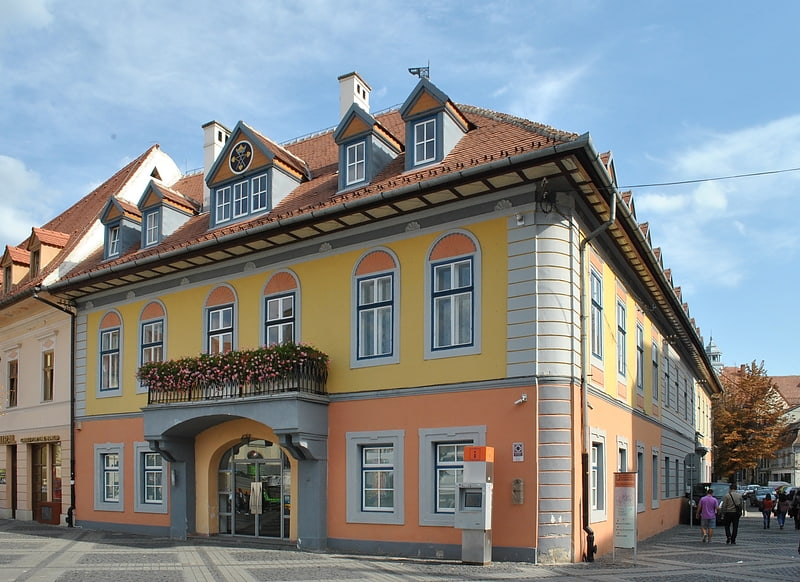
Tourist attraction in Sibiu, Romania. The Lutsch House is a historic monument located in the Grand Square of Sibiu, Transylvania, Romania. It uses the code name 143469.91 in the National Archaeological Repertory of Romania.
The building hosts the headquarters of the Democratic Forum of Germans in Romania (FDGR), as well as the headquarters of UDMR Sibiu.[8]
Address: 13 Piața Mare, Sibiu
ASTRA Museum of Traditional Folk Civilization
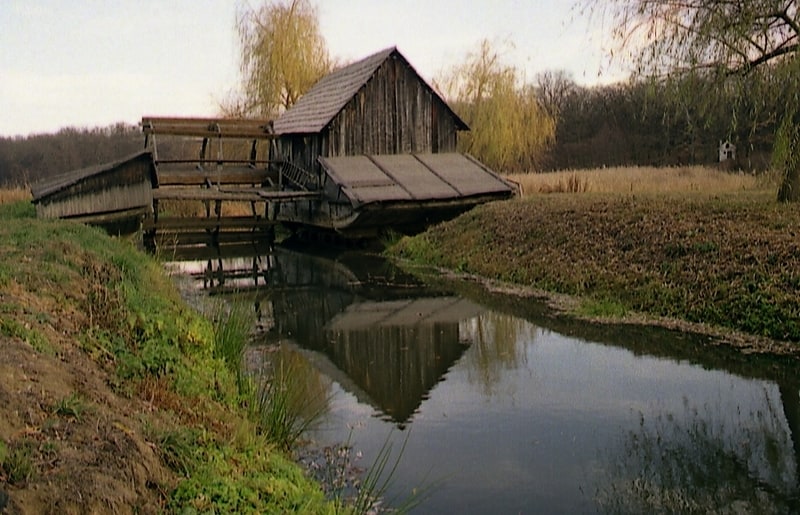
The Museum of Traditional Folk Civilization is one of the largest open-air museums in Romania. Located just south of Sibiu, the museum contains creations of traditional, pre-industrial Romanian folk civilization. Houses, workshops and building complexes are dotted around a lake, among the trees of Sibiu's Dumbrăvii.
Address: Calea Dumbrăvii, Sibiu
Steam Locomotives Museum
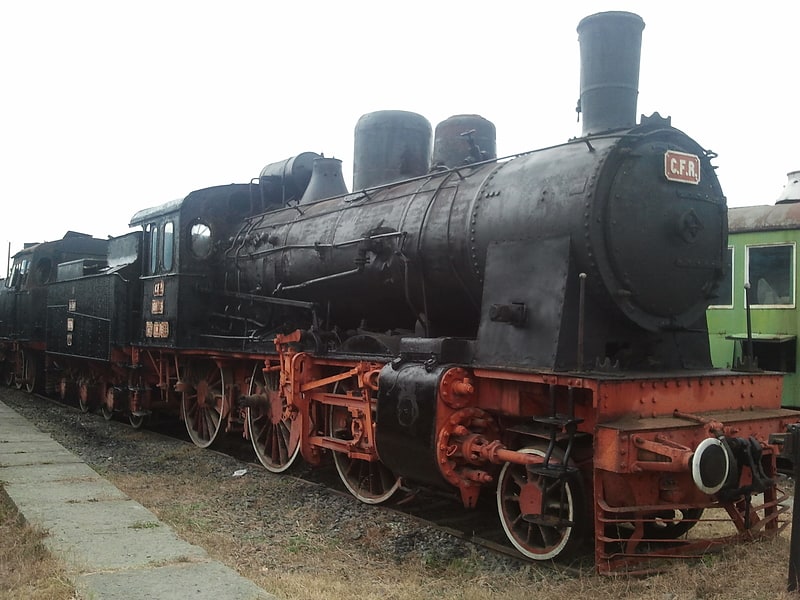
Museum. The Steam Locomotives Museum is a railway museum in Sibiu, Romania. It houses a collection of steam locomotives and engines.
Inaugurated in 1994, the museum comprises 23 standard gauge locomotives, 10 narrow gauge locomotives, 3 snowploughs and 2 steam cranes. 7 of these locomotives are active, and are used on a variety of special trains for enthusiasts and other groups.
The Locomotives Museum is located opposite the main railway station in Sibiu, comprising the former roundhouse and turntable across the railways lines. Part of the depot area is still used so care should always be taken. In addition, there is usually a narrow gauge steam locomotive based at the depot of the narrow gauge Agnita railway line (follow the narrow gauge lines east from the station).
The locomotives displayed were built between 1885 and 1959 in Romania and other countries, such as Germany (Henschel & Sohn, Borsig, Schwartzkopff) and the United States (Baldwin Locomotive Works).[9]
Address: Strada Dorobantilor 22, 550231 Sibiu
Thalia Hall
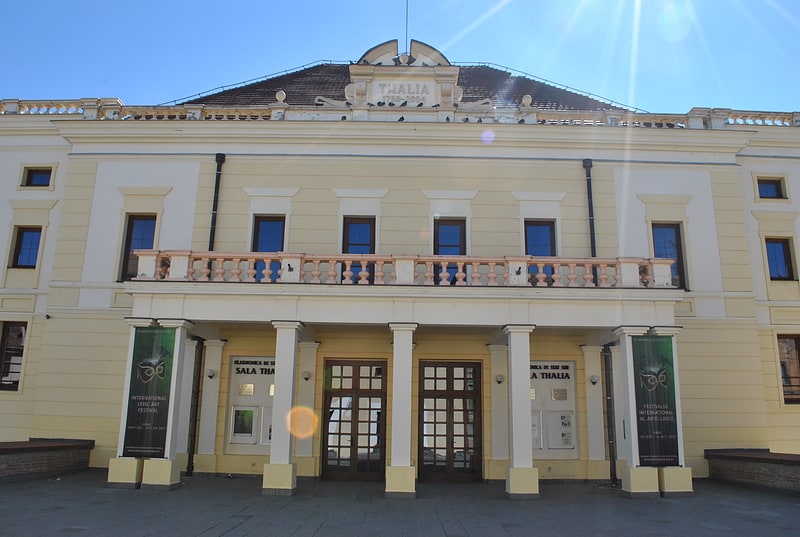
Also known as: Sala Thalia din Sibiu
Performing arts theater in Sibiu, Romania. The Thalia Hall is a theatre and concert hall situated in Sibiu, Romania. As of October 7, 2004, the hall serves as the new location of the State Philharmonic of Sibiu.[10]
Address: Sibiu, Corneliu Coposu Bulevard, Thick Tower, Sibiu, Romania
Saint John's Church
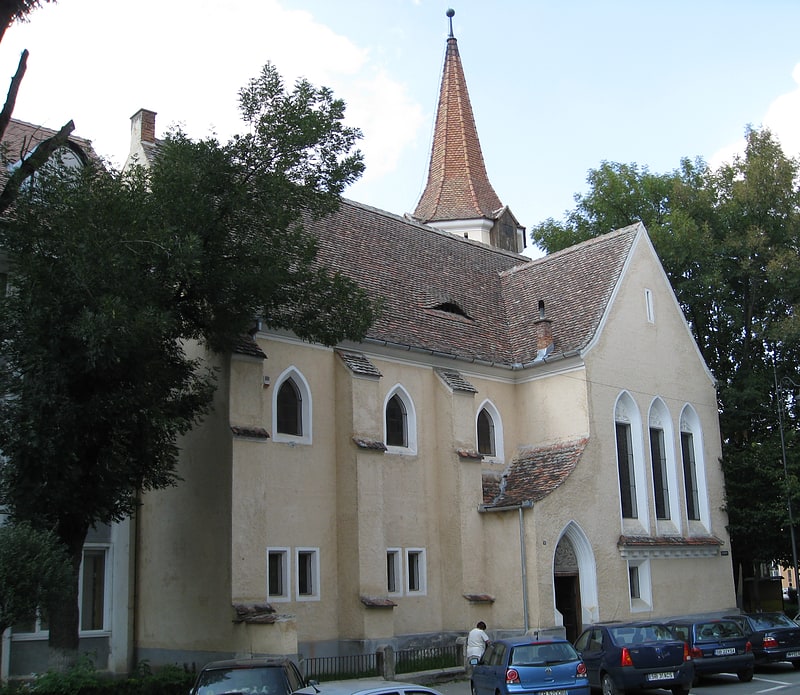
Also known as: Biserica Sfântul Ioan din Sibiu
Building. Saint John's Church is a Lutheran church located at 30 Mitropoliei Street, Sibiu, Romania. A complex of buildings was raised on the site in 1881-1883 as an orphanage serving the city's Lutherans, with the Neo-Gothic church completed in 1883, the 400th anniversary of the birth of Martin Luther. As there was a danger of collapse, this was demolished between 1911 and 1912, and a new church and priest's residence were built. The church is cross-shaped, with an octagonal steeple to the north and four corner towers. The building is largely unchanged from the early 20th century.[11]
Address: 32 Strada Mitropoliei, Sibiu
Natural History Museum

Museum
Address: 2 Strada Cetății, Sibiu
Potters’ Tower
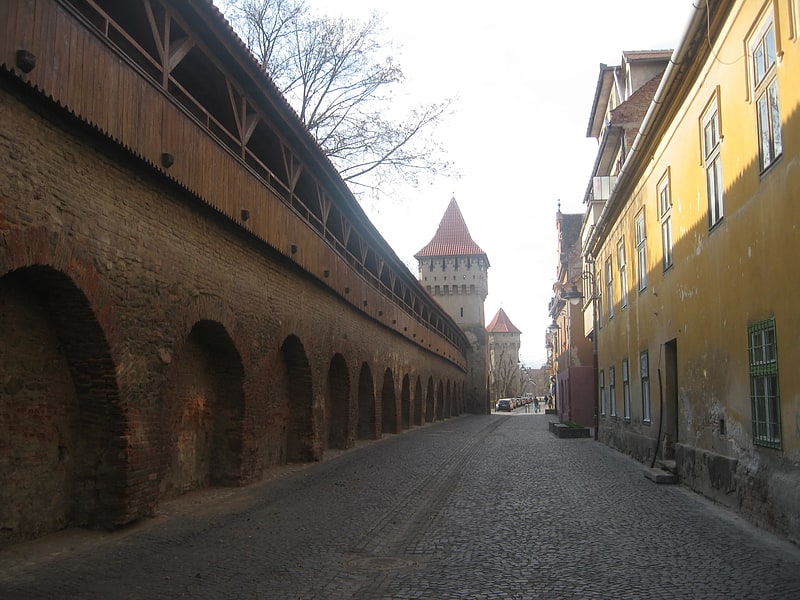
Observation decks and towers, Tower
Carpenters’ Tower
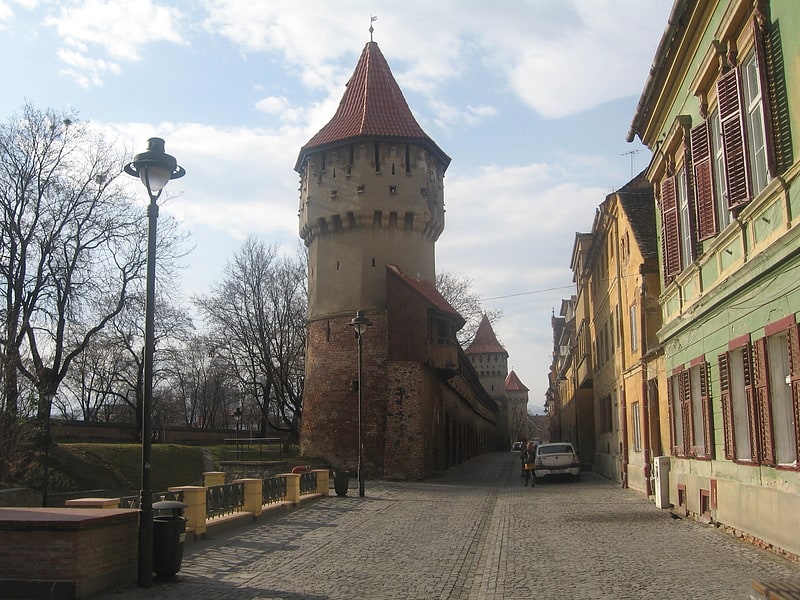
The Carpenter's Tower in Sibiu is a tower built in the 14th century by the Saxon guild of carpenters in the city of Sibiu. The tower was part of the third belt of fortifications of the city. The Dulgherilor Tower is the northernmost of the three towers on Citadel Street.
The third enclosure of the fortifications of the medieval city of Sibiu, which includes the defensive towers, the Dulgherilor Tower, the Olarilor Tower, the Archbuzier Tower, the Gate Tower and the courtyards built between 1357-1366, was included on the List of Historical Monuments of Sibiu County in 2004, with the classification code SB-II-m-A-12010.03.